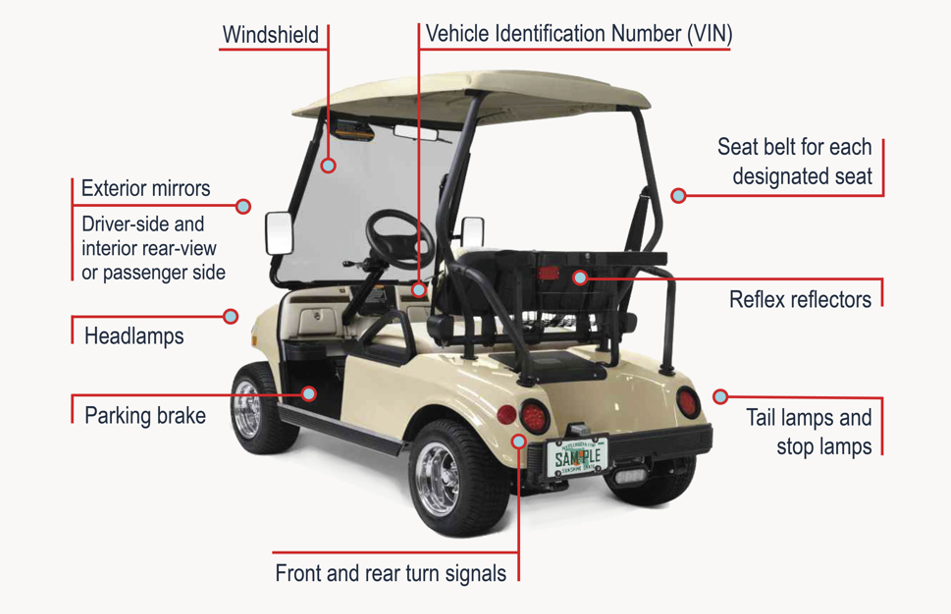Low-speed vehicles (LSVs) must comply with specific safety regulations to ensure their proper operation on public roads.
These regulations are established in Title 49 of the U.S. Code of Federal Regulations, section 571.500. Some of the key safety requirements for LSVs include the following:
Equipment: LSVs must be equipped with headlamps, stop lamps, turn signal lamps, taillamps, reflex reflectors, parking brakes, rearview mirrors, windshields, seat belts, and vehicle identification numbers.
These safety regulations are in place to address the unique characteristics and operational requirements of LSVs, given their lower speed capabilities and intended use in controlled environments.
The safety features that are required in low-speed vehicles
Low-speed vehicles (LSVs) are required to be equipped with specific safety features to ensure their safe operation on public roads.
According to the U.S. Code of Federal Regulations, section 571.500, some of the mandatory safety equipment for LSVs includes:

- Headlamps
- Stop lamps
- Turn signal lamps
- Taillamps
- Reflex reflectors
- Parking brakes
- Rearview mirrors
- Windshields
- Seat belts
- Vehicle identification numbers (VINs)
- Rear visibility requirements
These safety features are essential to address the unique characteristics and operational requirements of LSVs, given their lower speed capabilities and intended use in controlled environments.
More Details_ A SAFER FLORIDA safety-center/
Follow us _ https://www.exlithium.com/safety-information/
